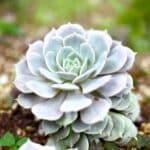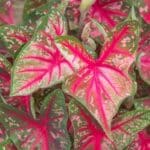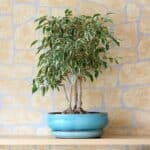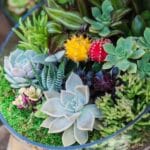Known for its unique looks, it's never a bad idea to add the Monstera Adansonii to your indoor collections. It is a houseplant that belongs to the Araceae family, and its vine leaves look almost unreal with their fenestrations while the leaf surface has a leathery texture and feel.
This plant grows best in a well-draining Aroid mix using bark, perlite, peat moss, and charcoal and should be kept in bright indirect light and an area with more than 60% humidity levels.
Ensure you water at least once a week and such that it stays slightly moist. Its temperature range is 64 to 81°F. You can see the full details of the Monstera Adansonii care below.
Table of Contents
What is Monstera Adansonii? | Monstera Adansonii Origin
| Common Name | Swiss cheese vine, Swiss cheese plant, five holes plant |
| Botanical Name | Monstera adansonii |
| Plant Type | Perennial |
| Family | Araceae |
| Sun Exposure | Partial |
| Soil pH Acidic | neutral |
| Mature Size | 3–8 ft. tall (indoors), 10–13 ft. tall (outdoors), 1–3 ft. wide |
| Soil Type | Moist, well-drained |
| Flower Color | White |
| Native Area | Central America, South America |
| Bloom Time | Spring (does not bloom indoors) |
| Toxicity | Toxic to pets |
| Hardiness Zones | 10–12, USA |
Also known as Swiss cheese plant, monstera adansonii is native to Central and South America. It’s a tropical perennial plant that is often grown as a houseplant.
Like its brother Monstera deliciosa (also called the Swiss cheese plant), Monstera adansonii is known to have a very fast growth rate and a vining habit.
However, it will always remain at a moderate and manageable size when you grow it in a container inside your house. When grown as a houseplant, Swiss cheese plants are generally cultivated from young nursery plants and can easily be potted.
Monstera adansonii common name comes from its large, distinctive heart-shaped leaves that is often laced with holes as the plant grows older (through a process known as fenestration). This is what makes the leaves look like “Swiss cheese.”
Finally, it's worth noting that every part of Monstera plants are poisonous to pets, so you want to be careful when growing these plants indoors.
Is Monstera Adansonii Easy To Care For?
Yes, the Swiss cheese plant is incredibly easy to care for, and it’s a climbing plant. Monstera adansonii has aerial roots that grows downward from the stem and braces against any available support, including the ground.
It uses these roots to push itself up onto a woody vine or adjoining tree in the wild. When grown as a houseplant, you can easily simulate this behavior by inserting a stake in the center of its container/pot.
Giving it regular water and food is all you need to care for monstera adansonii. You might also be required to do some routine maintenance pruning to keep it at your desired size.
How to Care For Monstera Adansonii
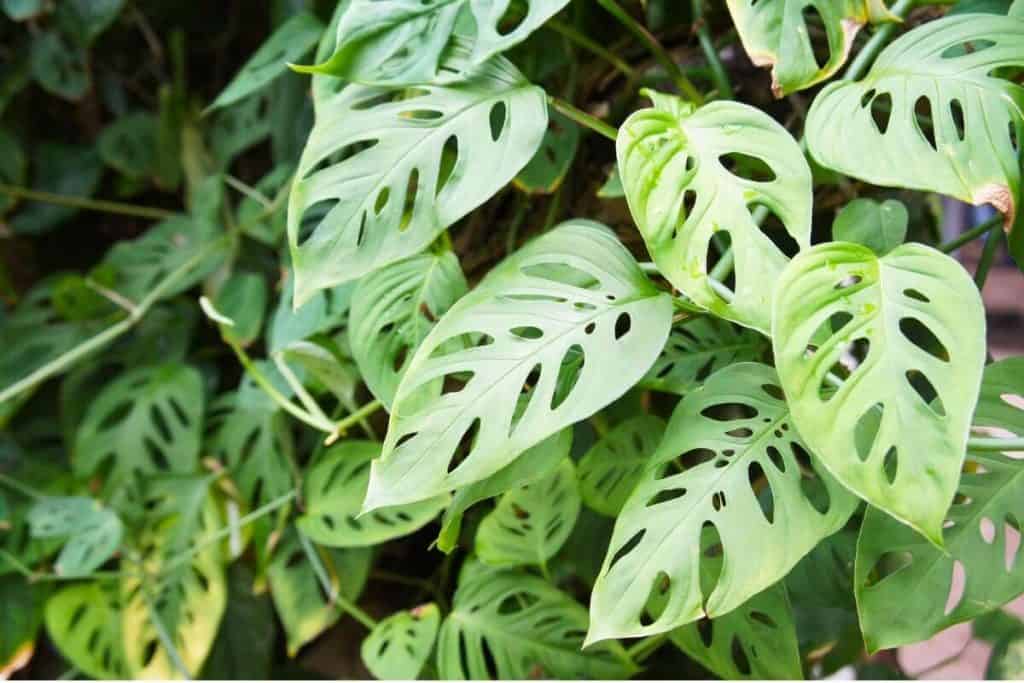
Below is everything you need to know to grow a healthy monstera adansonii plant. We will talk about the plant’s light requirement, watering requirement, humidity, temperature needs, etc.
Recommended Post: Monstera Adansonii Vs Deliciosa
Natural Habitat & Light Requirements
The Monstera Adansonii's are epiphytic (technically hemiepiphytic), just like other plants like Pothos, Arrowhead Vines, and Monstera delicious.
Their natural habitat is in the sparsely lit jungles of South and Central America. They grow beneath the cover of other plants in native environments.
Keeping this in mind, the Monstera Adansonii prefers to be near sunlight, but not directly in it. In other words, if the light is too strong for it, like a hot west exposure near a window, it will result in scorch leaves that reveal brown marks.
Therefore, diffused or less concentrated sunlight is ideal.
Bright indirect light is perfect for a proper growing Monstera Adansonii. To give it the best chance, keep it a few inches away from a well-lit window.
East or West-facing windows are the best options because the light indoor plants receive is not as strong as direct sunlight. Natural sunlight is measured at approximately 10k foot-candles or 100k lux.
Meanwhile, bright indirect light ranges between 10k – 20k lux or 2k – 5k foot candles. During winter seasons, you can supplement your Monstera Adansonii with a grow light. You can even use it for all seasons to help speed up the growth of the plant.
Watering Requirements
It's quite necessary to water your Monstera Adansonii regularly watering. During the summer seasons, you can keep the soil moist but not excessively soaked.
You can control it by using your fingers to poke into the top 5cm of a potting mix to feel the soil moisture level before watering.
Allow it to dry out for an extended period if it feels wet, as overwatering can result in fungal issues or root rot. You can water at least once a week, beginning with enough water, and ensure it drains from the bottom of the pot.
When the plant isn't in an active growing phase in the winter seasons, endeavor to reduce the watering rate.
Just as it is with other plants, drainage of the Monstera Adansonii is important. Therefore, make sure that any container you put your plant into must have enough holes underneath to allow excess water to drain from the pot freely and away from the plant's roots.
On the other hand, these tropical plants do not thrive with a long duration of dryness, as they won't develop their characteristic holes if conditions are excessively dry or cold.
Therefore, you must keep a close eye on them to ensure the right moisture balance within the soil.
Humidity and Temperature
The Monstera Adansonii variety thrives in very high humidity and warm temperatures. Therefore, the closer you can imitate the plant's natural conditions, the better.
However, temperature-wise, you must ensure the plant always remains in an area that's more than 40 degrees Fahrenheit and secure it from drafts.
In other words, the ideal temperature range is between 64 to 81°F (18 to 27°C). A humidity level above 60% is the perfect condition for the plant.
So, you can keep it inside a warm, well-lit bathroom, as it is a nice location for it. And, if you need to increase humidity, mist the plant or adopt the use of a humidifier in place of a low humidity area.
Soil Requirements
The Monstera Adansonii needs moisture retention in its soil, thriving in peat-based potting soil. Peat helps to trap moisture in the soil without making it excessively soaked. It gradually releases that water to the plant.
The plant demands that its container have a well-drainage system, as well, to ensure excess water does not remain trapped. Therefore, the plant thrives in slightly acidic soil, with a pH range of about 5.5 to 7.0.
Fertilizing Needs
Immediately you are done with potting (or repotting) the Monstera Adansonii, be patient for at least four to six months to fertilize it because potting mix already contains slow-release fertilizer in it.
After that, you can feed your Monstera Adansonii plant with an all-purpose liquid fertilizer that has been diluted by half every month. Use well-balanced fertilizer at half-strength with an NPK ratio of 20-20-20.
Planting (Potting & Repotting) Monstera Adansonii

The Monstera Adansonii plant thrives when it is repotted every two years, at the very most. To ensure that it stays healthy, experts' advice is that you keep your plant in a bigger pot every year (repotting).
But first, ensure that the pot to plant and soil to plant ratio is not out of balance to prevent watering from becoming a challenge.
Therefore we also advise that you use a container with drain holes because these plants do not like to stay in soaked soil for an extended period. Clay pots or any other pot is ideal and will undoubtedly do the trick.
Recommended Post: Monstera Obliqua Vs Adansonii
How to Prune Monstera Adansonii
Just like other indoor varieties, like the Monstera Obliqua, regular pruning of the Monstera Adansonii won't be quite necessary because they are slow growers.
However, you can help to control its growth and trim off any dead or damaged leaves while they appear with the use of sterilized pruning shears. Best time to prune it is during the spring.
Monstera Adansonii Propagation
Propagation refers to the multiplication of plant collection from cuttings of the parent plant. It is quite easy to propagate the Monstera adansonii, as you can propagate vines and put them back in the pot to make the mother plant fuller.
Or propagate and grow new plants to share with friends and family. See the various propagation methods below;
Rooting Cuttings Monstera Adansonii in Water
Cut a piece of vine, ensuring that the cutting possesses at least one or two nodes (part of the stem where the leaves form).
Take your cuttings and put them in a small container filled with water. Please place it in a spot where there's indirect light and regularly refresh the water.
Then, be patient for a while, as roots will form within one to three weeks. Once your cuttings have developed strong roots, it is time to plant them in the soil.
Rooting Cuttings Monstera Adansonii in Soil
Another way to propagate your Monstera adansonii is to avoid the water rooting and adopt the soil.
- Give your plant rooting superpowers, using a rooting hormone on your cuttings.
- Dip your cuttings in water first, then dip the bottom ¼ inch in rooting hormone powder.
- Fill a small pot with slightly moist, well-draining soil, and stick your cutting in about ½ inch deep.
- Place it somewhere with indirect light and be patient. It can take a couple of weeks for your plant to root; then, you will see new growth.
Monstera Adansonii Varieties
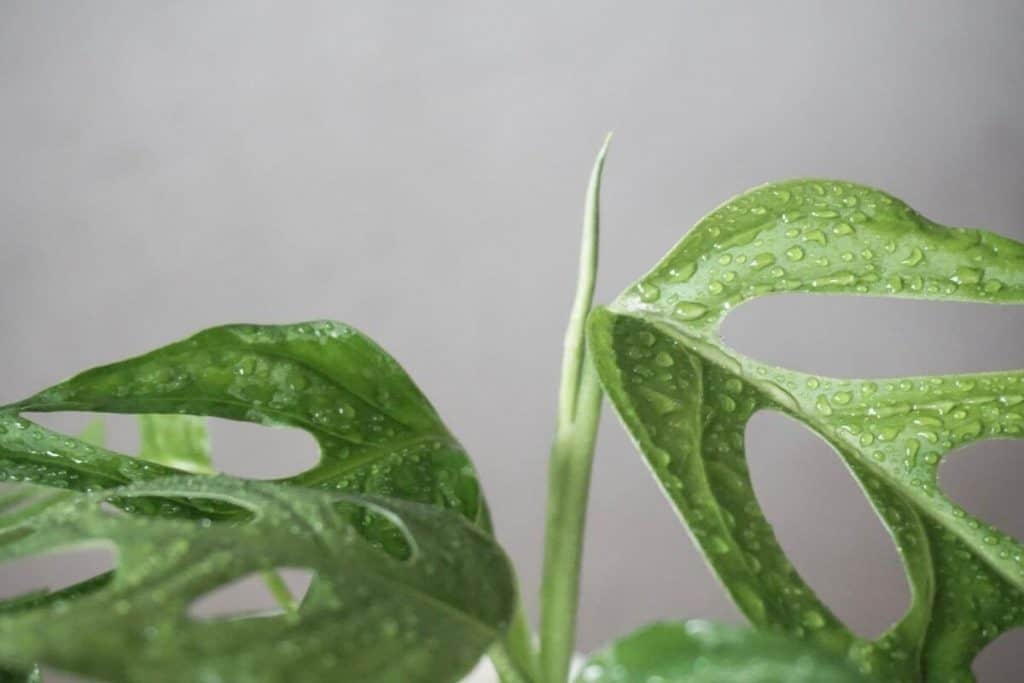
As far as the Monstera Adansonii is concerned, it has several varieties and depending on the area of its origin, it may vary both in size and appearance. In reality, the appearance of the leaves and holes in the leaves differs from type to type.
Some of these varieties grow much bigger leaves than the rest of them. Some of them possess round-shaped leaves, whereas others are tinier in shape.
However, let's look at the differences in the two basic varieties called the Monstera Adansonii Round Form and the Monstera Adansonii Narrow Form.
1. Monstera Adansonii Round Form
The Monstera Adansonii Round Form variety, just as the name implies, has round-shaped leaves and possesses similar holes in the leaves as the Narrow Form variety. But the difference is clear in shape, as it has larger and more heart-shaped leaves.
The appearances aside, as we mentioned earlier, you can't find much difference from the soon-to-be-discussed variety. The care and maintenance methods for both varieties are the same.
2. Monstera adansonii Narrow Form
As the name implies, the leaves of the Narrow Form variety are much narrower than the previously discussed variety. They are normally more elongated, and the tips point slightly to one side.
Meanwhile, as we discussed earlier, apart from the shape and size, there are no clear differences between both varieties, as their maintenance methods are quite similar.
3. Monstera adansonii Variegated
Apart from the previously mentioned two varieties of Monstera Adansonii, there is also the variegated form of the Monstera Adansonii plant, otherwise known as the chimeric variety that is very scarce and challenging to find. The cuttings alone are worth thousands of dollars.
Seeds cannot cultivate variegated Monkey Mask plants because they will, in precisely every case, not pass on the white or yellow variegation of the mother plant.
Again, Variegated Monstera Adansonii cannot be produced using tissue culture. You can only grow them by propagation through cuttings.
Variegated Monstera Adansonii is also known for having stunted growth compared to their completely green counterparts because the area that is colored white does not contain enough chlorophyll to photosynthesize.
And, purely white leaves will subsequently go brown and die again.
Therefore, once you notice that your plant only grows white leaves, cut below the leaves immediately and hope for less extreme variegation, only the green section of the leaves can produce chlorophyll to keep plants alive.
It is, however, not too much of a surprise that these plants are quite expensive and only available for several thousand dollars, and only a few nurseries in Asia, the USA, and aroid collectors are cultivating this beautiful variant of the Monstera Adansonii.
So, other than the Philodendron Spiritus Sancti and the Monstera Obliqua, the Monstera Adansonii Variegata is an ideal unicorn houseplant.
Types of Monstera Adansonii
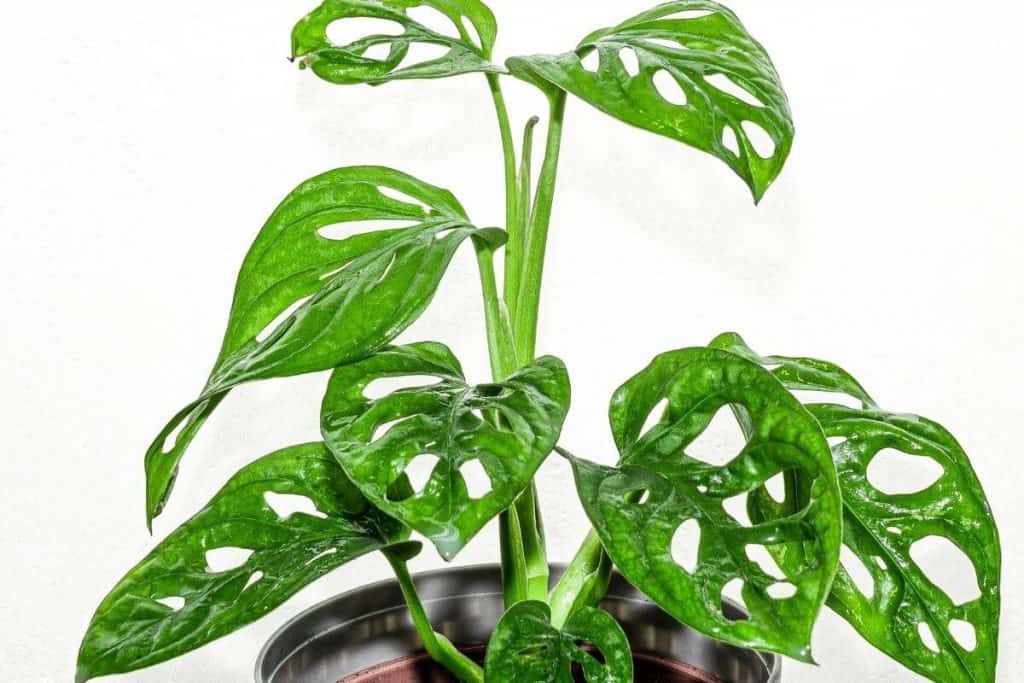
In most cases, the Monstera Adansonii is referred to as the Swiss Cheese Plant. In other words, you can use the names interchangeably. Meanwhile, like, the Monstera Adansonii, some other species can be called The Swiss Cheese Plant. They include;
Monstera deliciosa: This species features leaves that are larger than those of Monstera adansonii.
Monstera borsigiana: This is a smaller and faster-growing form of Monstera deliciosa.
Monstera obliqua: This rare species looks similar to Monstera adansonii, but its leaves are more slender with more holes.
Recommended Post: Monstera Deliciosa Vs Borsigiana
Important Tips on Growing Monstera Adonsonii
Monstera Adonsonii is an epiphytic plant (air plants that grow on others, using them as physical supports but neither gaining nutrients from them nor causing them any damage, nor beneficial to them) in nature, as they grow up and over other tall rainforest trees.
In other words, when you plant them indoors, they will clamor for some support to attach to as they grow. You make these supports available in several ways, including wrapping a coconut fiber around a piece of PVC pipe, a stick, or a wooden stake.
Then, attach the fiber firmly with wire or string and gradually tie your plant onto the support to help it hold firmly onto it. You can also buy already prepared 'plant totem poles' online or at some nurseries that can perfectly act as a support system.
Once a month, you can wipe down the plant's leaves with a damp cloth to wipe off any dust that it has absorbed, which may prevent the leaves from gaining enough oxygen.
You can also prune off any damaged or dying leaves using a sharp pair of scissors or secateurs.
Frequently Asked Questions
Is Monstera adansonii same as Swiss cheese?
Yes, monstera adansonii is also known as “the Swiss cheese plant” and is popularly known for its unique heart-shaped leaves.
Is Monstera adansonii rare?
No! Monstera Adansonii is generally not a rare plant. Lots of plant lovers have started to grow their own at home and you can easily buy them in most parts of the world.
What is the difference between Monstera adansonii and deliciosa?
One of the notable differences between monstera adansonii and deliciosa is that monstera adansonii is cheesier than monstera deliciosa. Adansonii leaves are also more perforated and delicate than that of deliciosa and the plant is equally petite in comparison.
Why is my Monstera Adansonii curling?
The most common reason why monstera adansonii is curling is due to careless regulation of water supply. Overwatering or underwatering of Monstera Adansonii will damage its growth and development and lead to symptoms such as curling of leaves, mushy roots, and yellowing.
How do you make Monstera Adansonii Fuller and Bushy?
You can make your monstera adansonii plant to grow fully by pruning the plant. If you start the process earlier on, pruning the tip will do the magic to keep the plant bushy.
Does Monstera Adansonii grow fast?
Yes, monstera adansonii is a fast-growing plant! It grows quickly from spring into the early fall. You may need to be pruning the plant regularly to keep it in check – and if you want it to grow upward, it'll continue to go until there’s no more space to climb.

